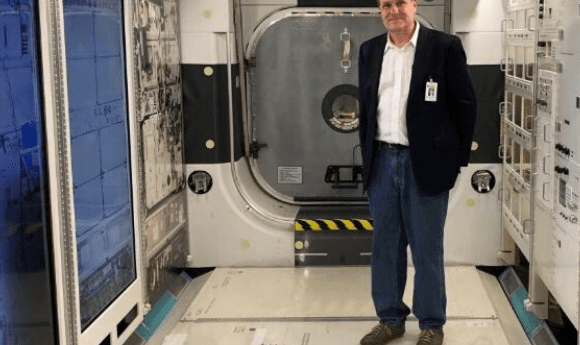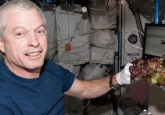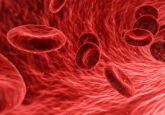A phone call from space: first blood clot in space treated by doctors on Earth

After an astronaut’s blood clot was discovered during a mission, an expert successfully treated the condition from Earth.
The first-ever case of a blood clot in space has been detailed by Stephan Moll (University of North Carolina; USA) who has co-written a case report published in the New England Journal of Medicine. Moll, a thrombosis expert, was the only non-NASA doctor requested to advise when the clot was discovered.
The astronaut was 2 months into a 6-month mission on the International Space Station (ISS) when a clot was found in their jugular vein. The blood clot was discovered by chance when the astronaut – who remains anonymous – was performing ultrasounds on their neck for a study examining the redistribution of body fluid in zero gravity.
Moll initially requested to visit the ISS and examine the patient personally; however, due to the time-sensitive nature of the situation, this was not possible.
“NASA told me they couldn’t get me up to space quickly enough, so I proceeded with the evaluation and treatment process from here in Chapel Hill,” Moll explained.
As this was the first case of an individual developing a blood clot in space, there was no established treatment protocol. The doctors could only work from the small medical supply kept onboard the ISS and provide the astronaut with treatment instructions.
“Normally the protocol for treating a patient with deep vein thrombosis would be to start them on blood thinners for at least 3 months to prevent the clot from getting bigger and to lessen the harm it could cause if it moved to a different part of the body, such as the lungs,” commented Moll.
- It’s a twin thing: uncovering the biological effects of space travel
- Sequencing DNA in space
- Microbe mining in space
There was a limited amount of enoxaparin, a blood-thinning drug, available. An appropriate dosage that would treat the clot without stocks running out was calculated, giving time for a supply of apixaban – an alternative blood thinner recommended by Moll – to arrive at the ISS.
The astronaut received Enoxaparin for approximately 40 days, after 43 days the shipment of apixaban arrived. The entire process lasted more than 90 days, the astronaut received guidance from a radiology team and carried out regular ultrasounds on their neck to assess the situation. Moll personally provided advice to the individual over the phone and via emails.
“When the astronaut called my home phone, my wife answered and then passed the phone to me with the comment, ‘Stephan, a phone call for you from space.’ That was pretty amazing,” explained Moll. “It was incredible to get a call from an astronaut in space. They just wanted to talk to me as if they were one of my other patients.”
When taking blood thinners there is a risk that if an injury occurs, internal bleeding is difficult to control. To minimize this risk, when returning to earth the astronaut ceased taking apixaban 4 days prior to the journey. Upon return, the astronaut required no additional treatment for the blood clot.
The chance nature of the blood clot discovery highlights the need for more research examining the risk of deep vein thrombosis in space. This is especially relevant when considering the future planned missions to Mars, which will require astronauts spending longer durations of time in zero gravity.





